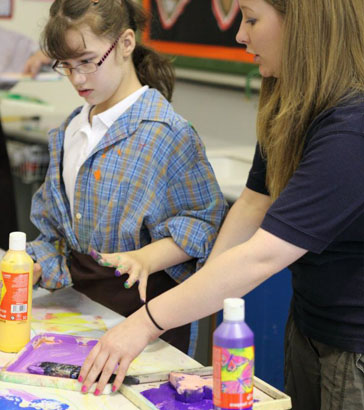and dance
Art, music, drama and dance have unique abilities to cut across the communication divide.
These expressive arts provide real opportunities for self expression and communication and support and enhance each child's learning.
What key elements of these arts enable them to communicate with children that have
difficulty communicating?
The key learning elements might be: pattern and texture; colour, line and tone; shape, form and space.
Return
Return
Return
The key learning elements might be: focus, tension, space, mood, contrast, symbol, role.
Return
If you want to understand how effective the arts can be it is useful to look at the following musical clip.
Music is a flagship example of the unique power of the arts to connect and affect each child.
In this clip, a musician plays guitar to a couple
of children.
Why is music so effective?
There's something about the musical instrument that strikes very deep in the human experience.
Musical Interaction is a fantastic way of reaching children who can become very difficult to reach. It is a brilliant way of conversing and communicating without the use of words...because these children don't use words.

Traditionally, music (like art, drama and dance) is used as a virtual medication by music therapists. They assess the client(s) and create a clinical plan for treatment that has clear goals. In this way, the music that the therapist plays works within a client centred, goal directed framework.
The clip on the previous slide shows that music and the arts should not just be used as therapy.
Each child with complex needs should have time to explore music and the arts, not just as a treatment but as a leisure activity.
This will help them to engage fully, communicate openly and learn to the best of their ability.
